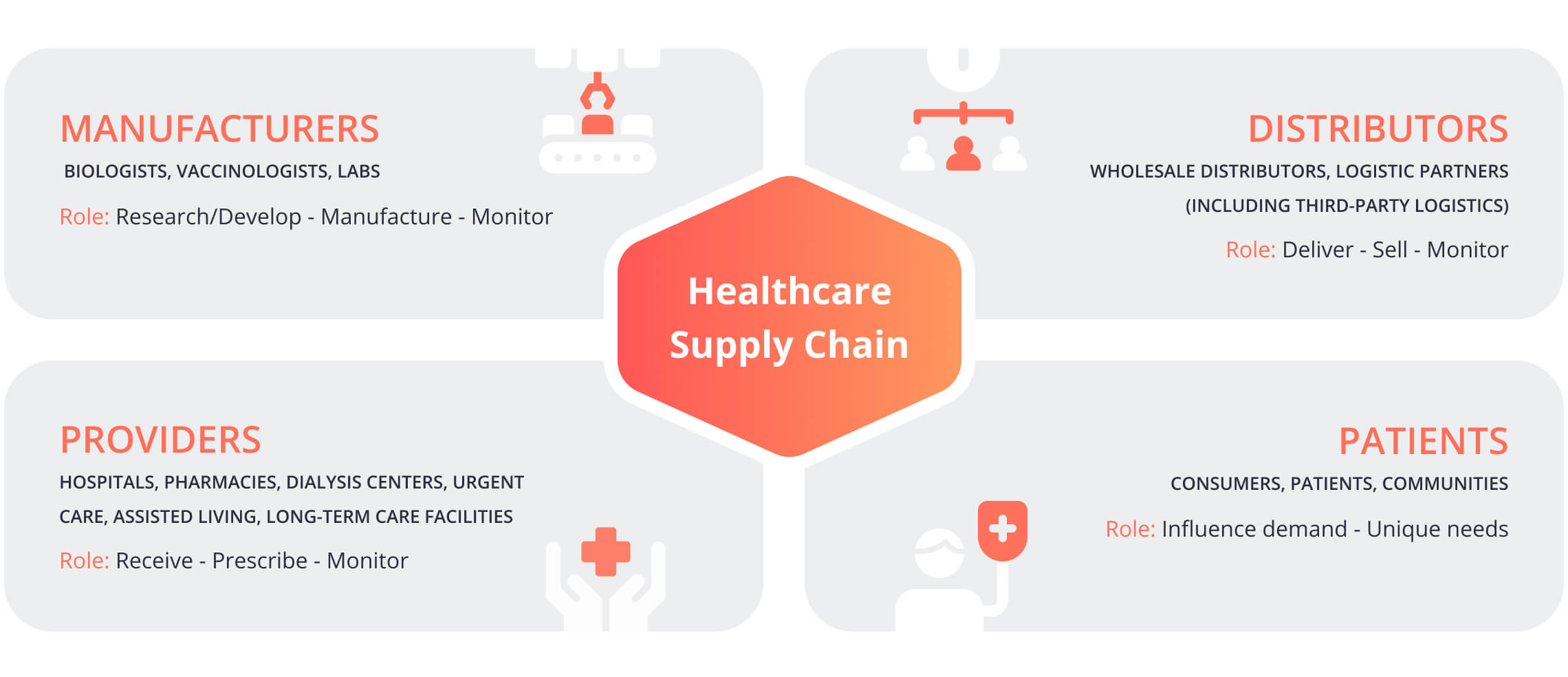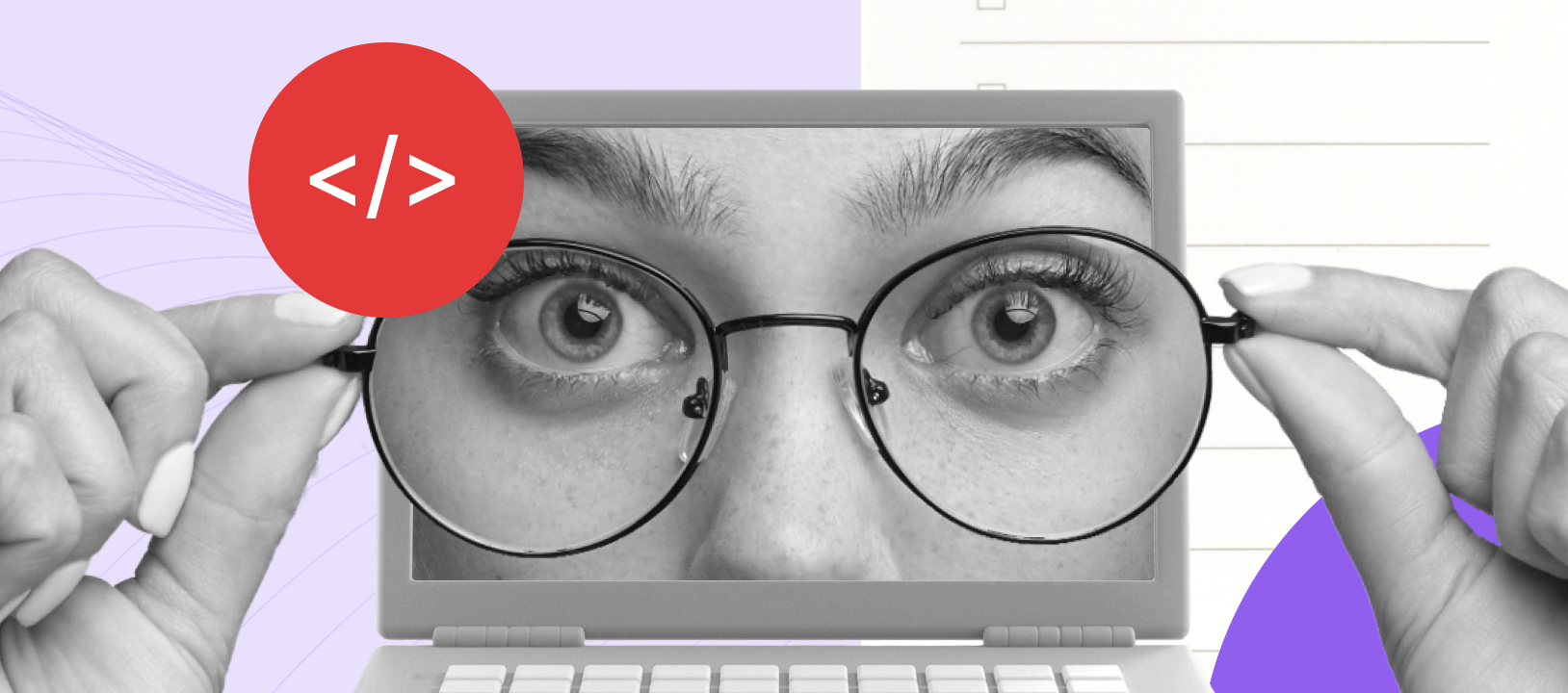COVID-19 has brought the critical importance of logistics and distribution networks to the forefront of public attention. From food to medical supplies production, the pandemic has disrupted the seamless flow of goods and services globally, revealing the weaknesses of these networks. In the healthcare sector, the pandemic required health systems to rely on their operational functions more than ever before, emphasizing the need for efficient and effective processes. With the increased pressure to manage the flow of critical medical supplies and equipment, healthcare organizations are recognizing the need to transform their supply chain processes. This article will explore the transformation of healthcare supply chains, focusing on the role of digital procurement in driving improvements in operational performance and strategic value.
Healthcare supply chain
Similar to the supply chains in manufacturing and other industries, the healthcare delivery system is large and complex. It’s an extensive network of systems, components, and processes that collectively work to ensure medicines and other healthcare supplies are manufactured, distributed, and provided to patients.

The healthcare supply chain involves multiple independent players, such as pharmacies and pharmacists, health insurance providers, health systems and hospitals, doctors, and pharmaceutical quality standard developers. These entities have different economic structures and objectives that may conflict with each other at times.
Effective supply chain management
Effective healthcare supply chain management has become a pivotal driver of competitive advantage across various industries, with healthcare being no exception. The ability to procure medical supplies and equipment efficiently, at a reasonable cost, and without compromising on quality is a vital factor in delivering prompt and optimal healthcare services.
However, the healthcare supply chain presents a myriad of specific challenges and complexities that directly impact procurement processes. These challenges may include inventory management, vendor selection, product standardization, and the maintenance of adequate stock levels to meet demand. The healthcare supply chain is also vulnerable to disruptions from external factors, such as natural disasters, pandemics, or geopolitical tensions, making it imperative to respond swiftly and effectively to ensure continuity of care.
In this digital age, leveraging technology can significantly enhance supply chain management, ultimately benefiting patients, healthcare providers, and the overall healthcare industry.
Healthcare specific procurement challenges
Having established the multitude of challenges that healthcare procurement is subjected to, it is now time to delve deeper into the root causes of these challenges and explore potential solutions. Specifically, in this article, we will explore the role of digitisation in addressing the obstacles facing healthcare procurement, and how this transformative technology can lead to a more efficient and effective supply chain management system.
We also suggest reading our blog on telehealth challenges for a comprehensive view of industry hurdles and potential solutions.
Unnecessary spending
Poor procurement processes can lead to uncontrolled spending, which is a significant problem in the USA, for example, resulting in an estimated $760 billion wasted annually (20-25% of the total spend in the healthcare sector) according to studies published in the Journal for the American Medical Association. The waste is mainly due to administrative costs ($266 billion per year) and pricing failure ($231-241 billion per year), both resulting from poor procurement practices. It’s vital that businesses take measures to modernize procurement operations and gain a clearer insight into their spending patterns.
To combat wasteful spending in healthcare, businesses can modernize their procurement operations by implementing software solutions. These can include spend analysis tools that provide better insight into spending patterns and e-procurement software to streamline procurement processes, reduce manual errors, and provide real-time data on spending. These technologies can help organizations gain greater control over their spending, reduce administrative costs, and improve pricing negotiations with suppliers.
Hidden costs
Procurement within the healthcare industry is far more complex than purchasing everyday items. There are multiple intermediaries, often with little to no transparency, that can drive up hidden costs due to provider markups, vendor rebates and inventory holding and distribution expenses. Collectively, these can make it very difficult to uncover the true cost of a purchase, making the job of procurement in healthcare organizations even more challenging.
Automation software can help by tracking and analyzing all the factors that impact final purchase prices. This eliminates the need for manual calculations and streamlines the process, providing a clear and comprehensive view of healthcare costs.
Inventory imbalances: shortages and overstock
The healthcare industry has long grappled with the complex challenge of inventory management. Balancing the need for adequate supplies with the challenges of managing storage space and costly inventory processes poses a constant hurdle. Adding to the complexity, the risk of products expiring before they are used adds a further layer of pressure to the mix. Ultimately, the stakes are high, as shortages of essential medical supplies can mean the difference between life and death. In a Cardinal Health supply chain survey, 40 percent of respondents said they have had to cancel a procedure due to a lack of supplies.
One of the complex challenges that the healthcare industry faces in procurement is overstock, which occurs when medical institutions hoard supplies to prepare for uncertain situations, leading to inefficient inventory management. For instance, Indian vaccine maker SII had to destroy 100 million doses of their COVID-19 vaccines after they expired.
The consequences of overstock can be dire in critical situations where medical supplies are in short supply in specific regions. Often, hoarding occurs at the manufacturer’s or distributor’s warehouse due to poor logistics or a lack of prioritization for the delivery of critical supplies.
To address these issues, end-to-end supply chain innovations that cover the entire supply chain, from sourcing to execution, are necessary. Such innovations can help ensure the effective movement of supplies, avoid inventory loss, and command the appropriate prices for critical supplies.
Ordering mistakes
Maintaining control over expenditures can be difficult, especially when manually placing orders. Ordering mistakes in healthcare procurement can lead to delays in patient care and increased costs. Even a small mistake in product numbers can result in shortages or overabundance of supplies. Additionally, unclear ordering responsibility and a lack of purchase tracking can lead to overlooked or duplicate orders.
Automation software provides an invaluable solution, with detailed purchasing data to ensure accuracy and transparency throughout the ordering process. This eliminates chances of overlooked or duplicated purchases due to unclear responsibility or lack of check-in procedures; anyone in your team responsible for making purchases has access via secure login so they can quickly see if something’s already been acquired. What’s more – no longer will you have to worry about incorrect orders with easy-to-use catalogs of approved items and vendors.
Incorrect and unavailable data
In addition to problems with incorrect order numbers, a healthcare procurement system might not be providing easily accessible or complete records. This lack of complete records and easy accessibility can hinder informed decision-making, leading to inefficiencies and higher costs.
A real-time inventory management solution can help hospitals overcome this challenge by providing greater stock visibility throughout the hospital and reducing stockouts. Additionally, transitioning to an automated procurement system can ensure complete and reliable purchasing records. An e-procurement solution can add transparency to stock levels, ordering, and delivery schedules. It tracks purchasing information automatically and stores it in an organized electronic database, making vital information about spend and supply chain easily accessible to decision-makers.
Security compliance
Ensuring security compliance in all areas of procurement can be a challenging endeavor, as healthcare-specific regulations, including HIPAA and HITECH, that must be adhered to are constantly changing and evolving. Security compliance means protecting confidential data, including patient records and other sensitive information; the process involves continually keeping up to date with industry legislation while also following accepted guidelines and safety protocols.
Learn why it’s incredibly important to have software that meets these industry standards in our blog article.
Softarex’s twenty years of experience in full-cycle development enable healthcare organizations to confidently address the challenge of security compliance in procurement. Our engineers can create custom solutions to ensure full HIPAA compliance, mitigating risk and safeguarding patient data.
By proactively overcoming these obstacles, healthcare providers and other stakeholders in the healthcare supply chain can create a sustainable competitive edge while meeting the ever-increasing demands for top-notch healthcare services.
Take an innovative approach to your procurement challenges
Digital procurement refers to the use of disruptive technologies to transform and automate traditional procurement processes, such as strategic sourcing, transactional procurement, and supplier risk management. It involves the use of advanced data analytics, machine learning, automation tools, data-driven optimizations and Al to enhance procurement efficiency, reduce costs, and increase supply chain visibility.
Digital procurement is transforming the way businesses manage their supply chain operations by providing access to previously unavailable data, or bringing order to massive (but unstructured) data sets; driving more complex analysis and better supplier strategies; and enabling more efficient operations. It enables procurement professionals to streamline procurement operations, identify risks and opportunities, and make data-driven decisions to achieve better business outcomes. It is a disruptive technology that is transforming the way procurement is conducted, making it more efficient, effective, and strategic.
Predicting future product and service needs is not an easy task. However, overcoming procurement challenges and reevaluating supply chain processes can lead to smoother operations and help position your organization for success. Embracing digital procurement can be a great step towards achieving these goals. If you’re interested in learning more about digital procurement strategies, don’t hesitate to contact the Softarex team today. We are always ready to answer your questions and guide you through the digital procurement journey.









